Abstract
The growth records of 64 patients with 45,XO chromosome constitution have been analysed. The extremely short stature of adults with this condition (142·5 cm) appears to be due to intrauterine growth failure, to a gradual decline in height velocity in childhood, and to the absence of a pubertal growth spurt. Pubic hair appeared in 68% of patients but was delayed both in relation to chronological age and to bone age. The growth failure is presumably the result of a genetic abnormality in the bones of these patients.
Treatment with oestrogens caused development of secondary sex characteristics but did not appear to affect final stature. The age of the patient when treatment was administered was not of significance in affecting the final height of the patients. Despite the reduction in adult height, the correlation between the height of the patients with Turner's syndrome and their parents was maintained, a roughly constant amount of height being lost through the chromosomal abnormality. This suggests that the genes whose action underlies the variation in adult height among the normal population must be located for the most part on the autosomes.
Full text
PDF

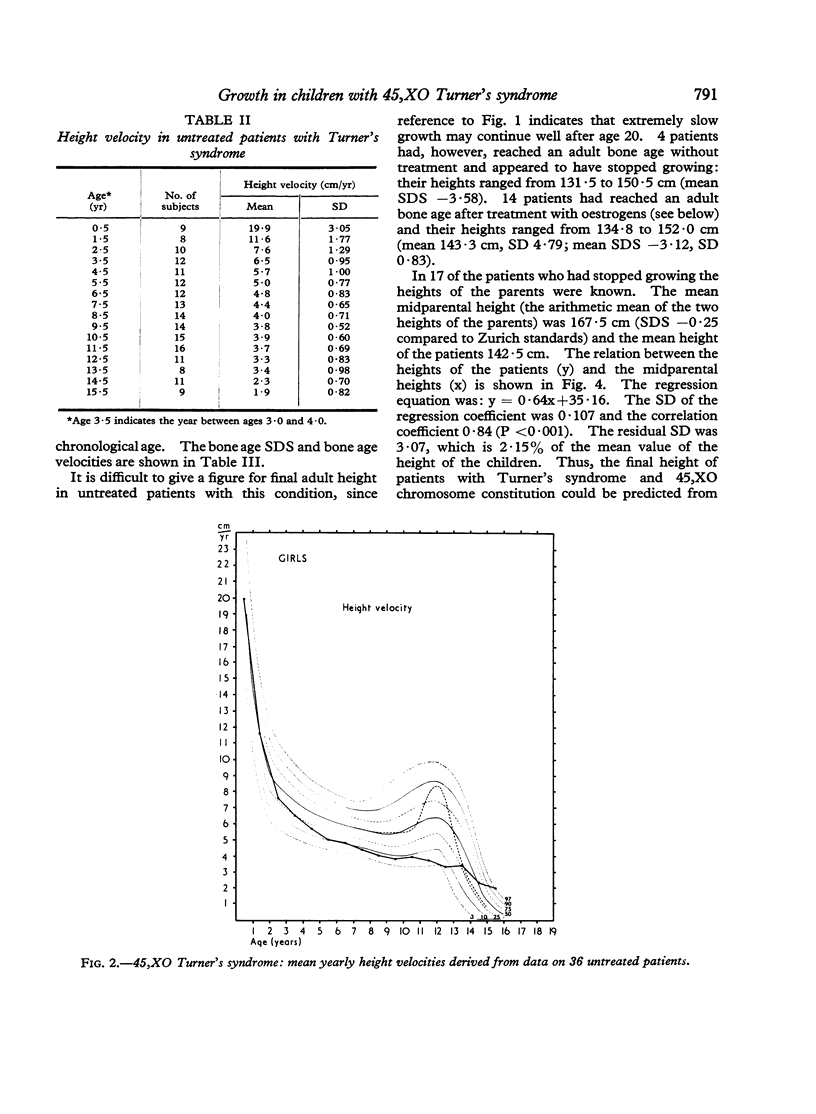
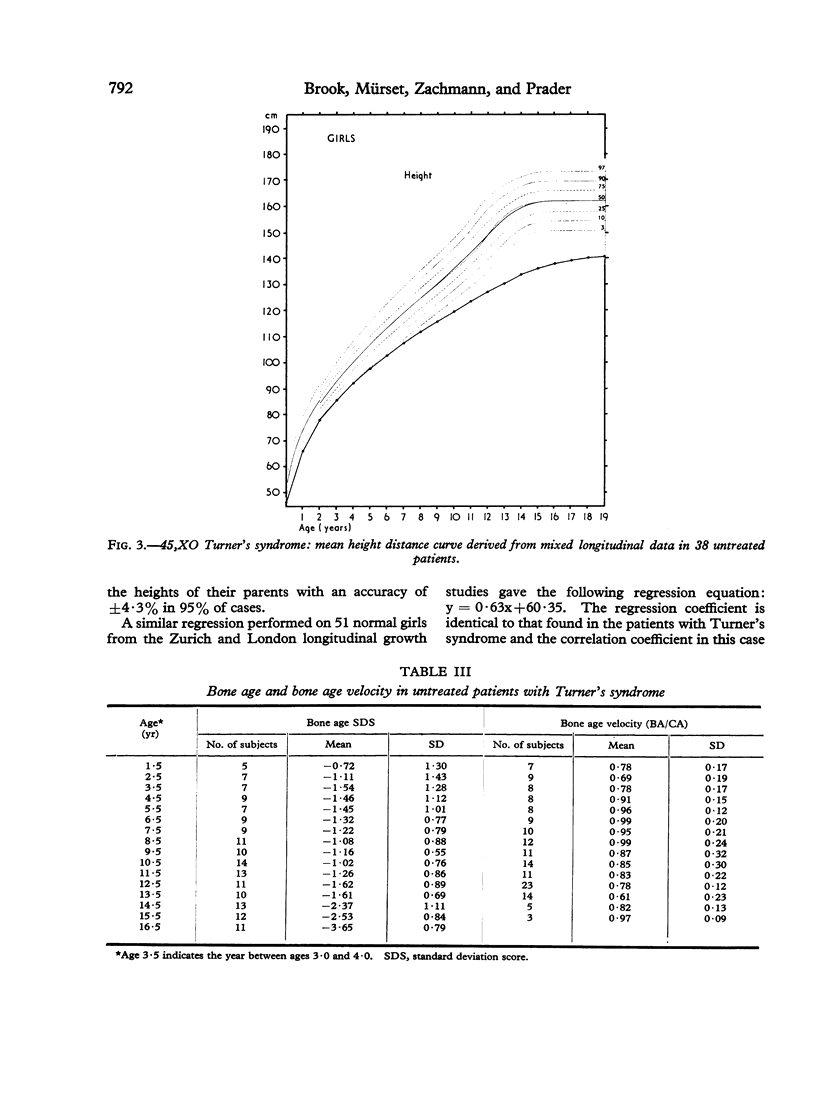
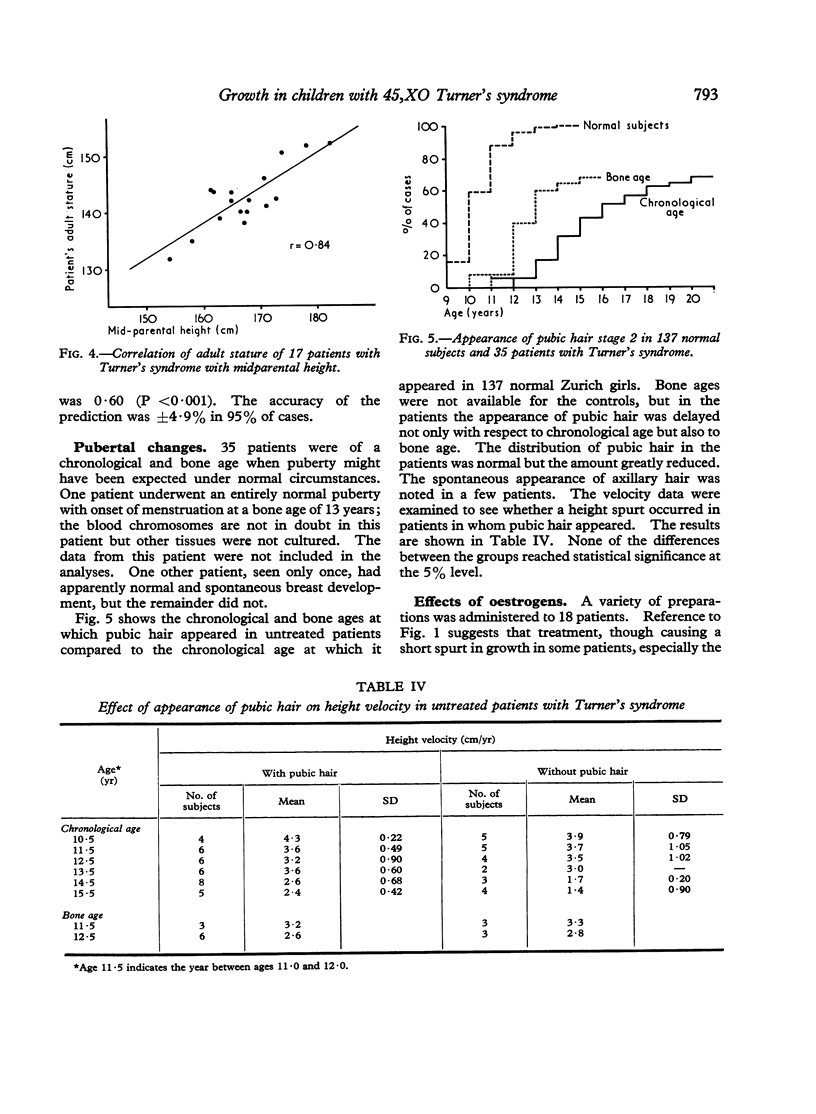
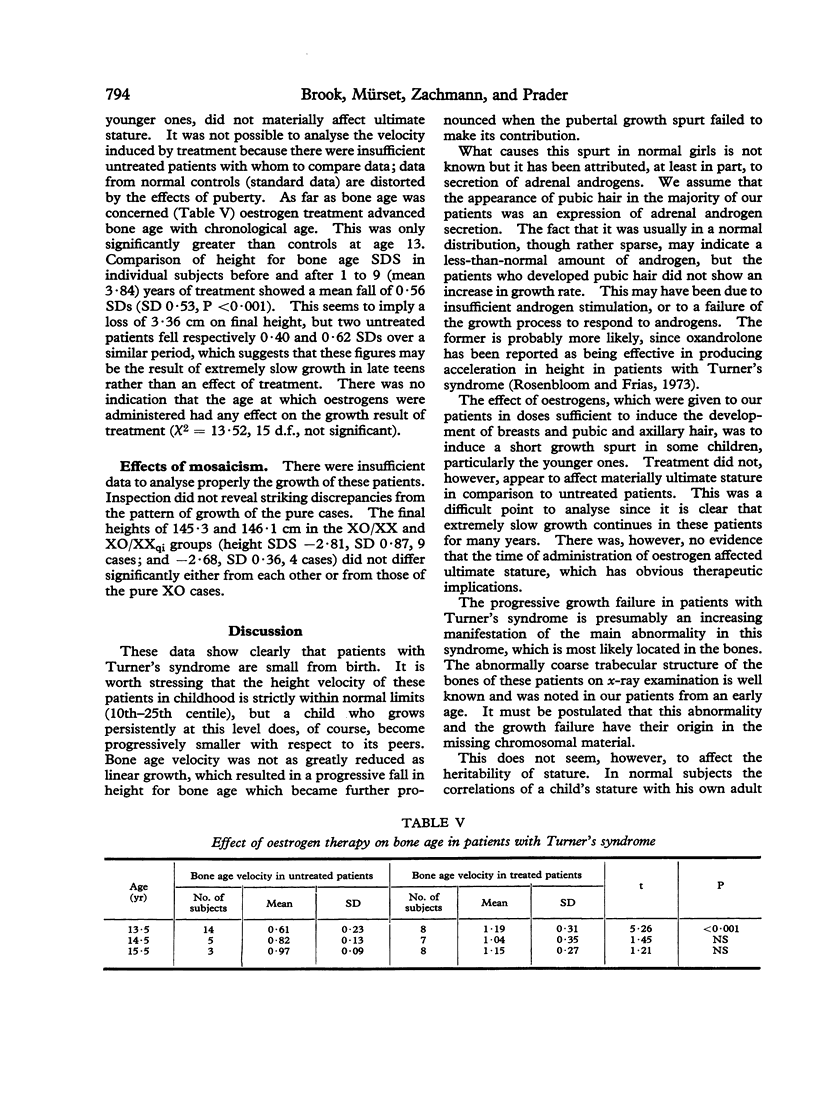
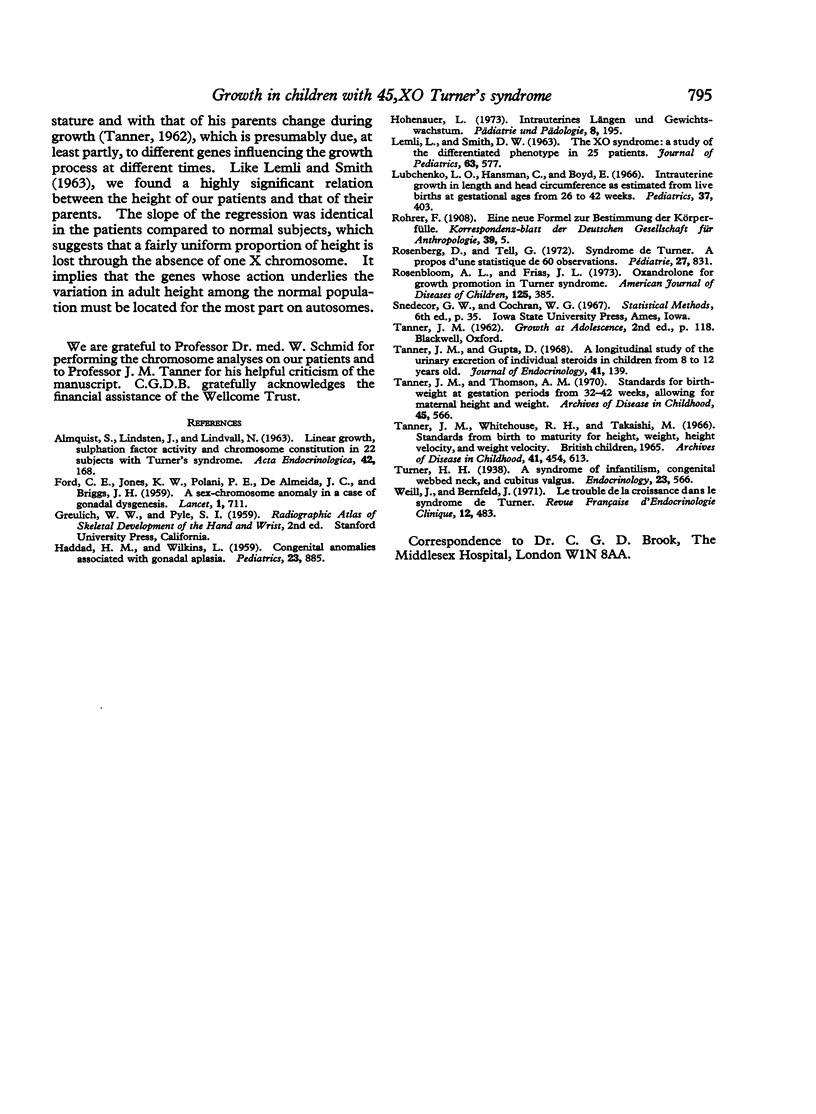
Selected References
These references are in PubMed. This may not be the complete list of references from this article.
- FORD C. E., JONES K. W., POLANI P. E., DE ALMEIDA J. C., BRIGGS J. H. A sex-chromosome anomaly in a case of gonadal dysgenesis (Turner's syndrome). Lancet. 1959 Apr 4;1(7075):711–713. doi: 10.1016/s0140-6736(59)91893-8. [DOI] [PubMed] [Google Scholar]
- HADDAD H. M., WILKINS L. Congenital anomalies associated with gonadal aplasia; review of 55 cases. Pediatrics. 1959 May;23(5):885–902. [PubMed] [Google Scholar]
- Hohenauer L. Intrauterines Längen- und Gewichtswachstum. Standardwerte aus Osterreich. Padiatr Padol. 1973;8(2):195–205. [PubMed] [Google Scholar]
- LEMLI L., SMITH D. W. THE XO SYNDROME. A STUDY OF THE DIFFERENTIATED PHENOTYPE IN 25 PATIENTS. J Pediatr. 1963 Oct;63:577–588. doi: 10.1016/s0022-3476(63)80368-6. [DOI] [PubMed] [Google Scholar]
- Lubchenco L. O., Hansman C., Boyd E. Intrauterine growth in length and head circumference as estimated from live births at gestational ages from 26 to 42 weeks. Pediatrics. 1966 Mar;37(3):403–408. [PubMed] [Google Scholar]
- Rosenberg D., Tell G. Syndrome de Turner. A propos d'une statistique de 60 observations. Pediatrie. 1972 Dec;27(8):831–850. [PubMed] [Google Scholar]
- Rosenbloom A. L., Frias J. L. Oxandrolone for growth promotion in Turner syndrome. Am J Dis Child. 1973 Mar;125(3):385–387. doi: 10.1001/archpedi.1973.04160030053010. [DOI] [PubMed] [Google Scholar]
- Tanner J. M., Gupta D. A longitudinal study of the urinary excretion of individual steroids in children from 8 to 12 years old. J Endocrinol. 1968 Jun;41(2):139–156. doi: 10.1677/joe.0.0410139. [DOI] [PubMed] [Google Scholar]
- Tanner J. M., Thomson A. M. Standards for birthweight as gestation periods from 32 to 42 weeks, allowing for maternal height and weight. Arch Dis Child. 1970 Aug;45(242):566–569. doi: 10.1136/adc.45.242.566. [DOI] [PMC free article] [PubMed] [Google Scholar]
- Tanner J. M., Whitehouse R. H., Takaishi M. Standards from birth to maturity for height, weight, height velocity, and weight velocity: British children, 1965. II. Arch Dis Child. 1966 Dec;41(220):613–635. doi: 10.1136/adc.41.220.613. [DOI] [PMC free article] [PubMed] [Google Scholar]
- Weill J., Bernfeld J. Le trouble de la croissance dans le syndrome de Turner. Rev Fr Endocrinol Clin. 1971 Nov-Dec;12(6):483–502. [PubMed] [Google Scholar]


